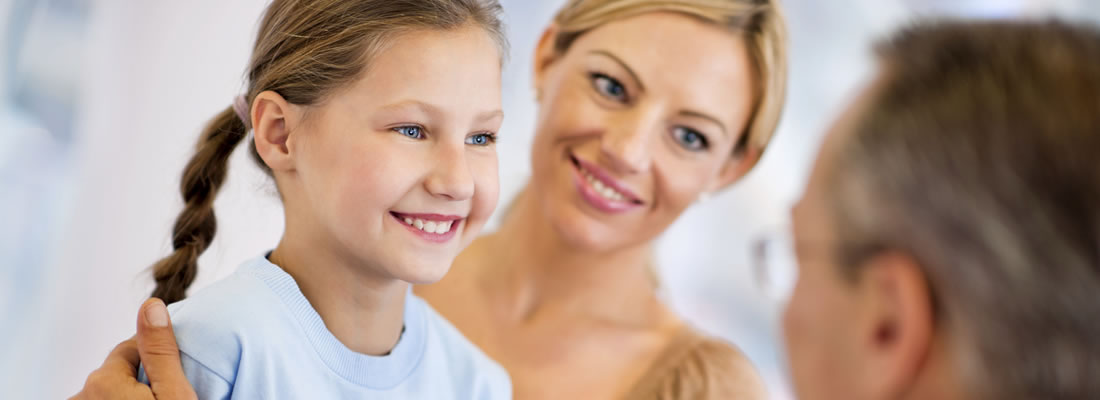A Proposed Four Step IC/BPS Treatment Protocol For The Youngest Patients –
When Jill van Royen sought medical care for her young daughter with IC, she found little help among the physicians in Northern California. Out of desperation, she and her daughter flew across the country to see Dr. Robert Evans at Wake Forest University. It was there that she finally found a physician experienced in treating IC in children. With his guidance, her daughter has finally begun to improve. Ms. van Royen wanted to use IC Awareness Month as a platform to educate other parents about the needs of children with IC. As a result of her efforts, we now have a suggested four step treatment plan based on the AUA Guidelines but adapted for the age of the child.
 Do you think a child under the age of 18 can get a diagnosis of IC?
Do you think a child under the age of 18 can get a diagnosis of IC?
Answer – Yes. One challenge is that the earliest NIDDK research criteria (approx. 1987) excluded patients under the age of 18. Unfortunately, many clinicians began to apply that standard to their clinical practice. Children under the age of 18 can certainly develop IC. The youngest I’ve worked with was six years old. In children, I look for urinary frequency, urgency, nocturia, any pain associated before or during urination, the ability of the child to sit through school, etc.
What barriers exist for parents who are trying to get help for their children?
Answer – Many pediatricians and urologists, including pediatric urologists, will flat out state that a child cannot have IC but they would be wrong. It does exist. Some doctors may blame it on childhood urinary symptoms, pelvic floor dysfunction or behavioral issues. If a parent is told that their child has a UTI but the cultures are negative, they should ask the doctor to look for IC. Similarly, if they are told that their child has overactive bladder but is not responding to treatment, they should also probe for the presence of IC. If the physician refuses, they need to find another doctor.
Are there any specific symptoms that you look for in children versus adults?
Answer – Children and adults are very similar in that they both experience urgency, frequency, getting up at night to urinate, and may complain of bladder pain. The challenge is that children often can’t verbalize what they are feeling or may hide it from their parents. Parents should make it comfortable for their child to talk about. Don’t use the word urinate. Pick a word that a child can understand like “tinkle” or “pee.”
Can children have Hunner’s lesions?
Answer – I have not seen true ulcers in a child but believe they may exist.
Have you noticed any triggering events for children with IC symptoms? (i.e. bicycle accident, UTI, poor diet, etc.)
Answer – Kids can have triggers just like adults It can be stress, a UTI, poor diet or perhaps physical trauma (i.e. bicycle riding, accident, etc.). Some children struggle with bedwetting and face fairly serious punishment from their parents.
Is there any relationship between bedwetting and IC in children?
Answer – Children struggling with pain may become incontinent or they may not be able to get to the restroom quickly enough. Children should never be punished for incontinence or bathroom complaints. If it has become a consistent problem and/or your child is complaining of pain, difficulty sitting through class, please consult with your doctor or a urologist.
Is diet modification as important for children as it is for adults who struggle with bladder wall irritation?
Answer – Certainly if a child is consistently drinking sodas and acidic fruit juices throughout the day, this could be irritating their bladder. One way to find out is to exclude that risk food for a few weeks. Does their bladder feel better and can they sleep through the night more easily, by reducing these foods? If so, then avoiding those foods is important.
Many adults with IC have reported that high periods of stress can trigger IC flares? Are children also sensitive to stress?
Answer – Yes, children can experience an IC flare during periods of high stress, such as starting a new school year. Home should be a sanctuary for children in pain so parents should try to keep conflict and arguing at a minimum. Many schools now limit restroom access during the day, forcing IC patients to sit in pain.
What should a parent due if the school limits restroom access for their child?
Answer – No child should be forced to sit and hold urine in a painful bladder because a teacher will not allow them to go to the bathroom. Parents should talk to the teacher and the principal so that appropriate modifications to the rules around bathroom use can be made for the child with IC. If necessary, the school can be forced to make an accommodation plan like they would for a child with any other physical condition. Kids should not be forced to live in pain because of arbitrary school rules governing bathroom use.
Can puberty affect interstitial cystitis symptoms?
Answer – Yes. Some children may improve dramatically with the onset of puberty while others may struggle with worsening symptoms. Some girls are more sensitive to swings in estrogen during their menses cycle and may notice that they flare a few days before their period starts or on the day that they ovulate. One thing that could help is to track their symptoms with a voiding diary. If they flare consistently before their period, then you can plan for those moments, such as by using a heating pad, etc. etc.
If a parent with IC notices that their child may also have some IC like symptoms, what advice would you give them?
Answer – For some families, there can be a hereditary connection which we think involves having a more sensitive nervous system. Just as the parent had no control over their IC, they shouldn’t blame themselves if their child also struggles with bladder sensitivity. Rather, that parent has the opportunity to intervene early by modifying diet and seeking care. The earlier you can make the diagnosis and start therapy, the faster they become well and perhaps even reversed in children. Children often respond more rapidly because they have healthy, young tissue.
What’s the prognosis for children with IC?
Answer – One clear goal is to help that child feel normal again so that they can enjoy the activities that kids love, like going out with friends, having sleepovers etc. etc. Kids do really well with both diet modification and therapy. We often find that with time they can be weaned off meds a lot easier than adults with IC so parents should not assume that their child will be on medications permanently.
Dr. Evans’ IC/BPS Treatment Protocol for Children:
- The AUA Guidelines offer a six step treatment protocol for IC that can be adapted to the size, needs and sensitivities of a child. The guidelines are arranged with respect to patient safety, trauma and the risk of adverse event. Thus, patients generally begin with the easier, non-invasive strategies in Step One before progressing through the oral medications and instillations of Step Two, etc.
- If used, oral medications should always be adjusted to the weight of the child. Treatments involving a catheter can be upsetting and scary to a child and care must be made to reduce potential trauma, including the use of anesthetics, pediatric low friction catheters and appropriate treatments. Please note that older instillations such as Silver Nitrate Kids should not be forced to live in pain because of arbitrary school rules governing bathroom use. and Clorpactin are no longer considered therapies for IC due to the trauma they cause to the bladder wall.
- Hydrodistention with cystoscopy may be considered if the child is not responding to diet modification. If performed, it must be adjusted to the smaller size of the pediatric bladder. The AUA recommends the use of low pressure, short duration procedures to minimize trauma to the bladder reduce the risk of bladder rupture.
- Experimental (Botox, Cyclosporine) and surgical therapies are rarely performed on children or teens.
- The AUA suggests that pain be assessed at every clinical appointment and treated appropriately with a variety of modalities, including medication if necessary.
Ages 5-13
Step One
Self Help Strategies: Diet modification, water intake, relaxation, OTC supplements (CystoProtek, CystaQ, Cysta-MD or Aloe – ADJUSTED FOR WEIGHT) stress management, etc.
Step Two – Treatments
Oral Medications: Begin with 200 mgs. of Elmiron®. It is not FDA approved for use by patients under the age of 18. It is considered off label for children, but can be tried with a modified dosage amount based on weight. If patient is experiencing side effects (diarrhea, stomach ache, etc.) or if it is too costly, the supplements suggested in Step One are a viable alternative. A small amount of imipramine (25mg) or hydroxyzine (10mg) may also be considered.
Instillations: For age 9 and above, bladder instillations if the patient has not responded to oral medication, including Hep-Lido-A®. (specificity here)
Physical Therapy: If a child is showing signs of pelvic floor tension, a program of gentle stretching may be suggested.
Step Three – Hydrodistention
If the child is not responding to diet modification, a low pressure, short duration hydrodistention under anesthesia may be performed to look inside the bladder.
Steps Four – Six:
Rarely are pre-pubescent children treated with therapies from Steps 4 through 6.
Ages 14 and older (Teens can be more challenging)
Step One
Self-Help Strategies: Diet modification if dietary triggers are present. Improving water intake, reducing stress and anxiety, meditation, muscle relaxation, OTC supplements adjusted for weight, etc.
Step Two – Treatments
Oral Medications: These can be adjusted toward adult dosages. Elmiron can be increased to 300 or 400 mgs. 25 mgs. of amitryptline can be used in place of the imipramine, and hydroxyzine can also be increased to 25 mgs. This dosage can go up or down if patient is too sleepy.
Instillations: Bladder instillations (heparin, lidocaine) are an option.
Physical Therapy: If a teen is showing signs of pelvic floor tension, a program of stretching and myofascial massage is encouraged. In research studies, myofascial massage has been the most successful studied therapy for IC symptoms.
Step Three – Hydrodistention
Hydrodistention: A low pressure, short duration hydrodistention can be performed to examine the bladder wall if the child has not responded to any of the above treatments.
Step Four – Neuromodulation
Both Urgent PC® and Interstim® may be considered for teenagers. Urgent PC is usually tried first because it is less invasive and costly. Interstim requires surgical intervention and has a greater risk of adverse event.
Step Five & Six
Teens are rarely treated with experimental or surgical therapies.
(This article first appeared in the Winter 2016 IC Optimist magazine.)

